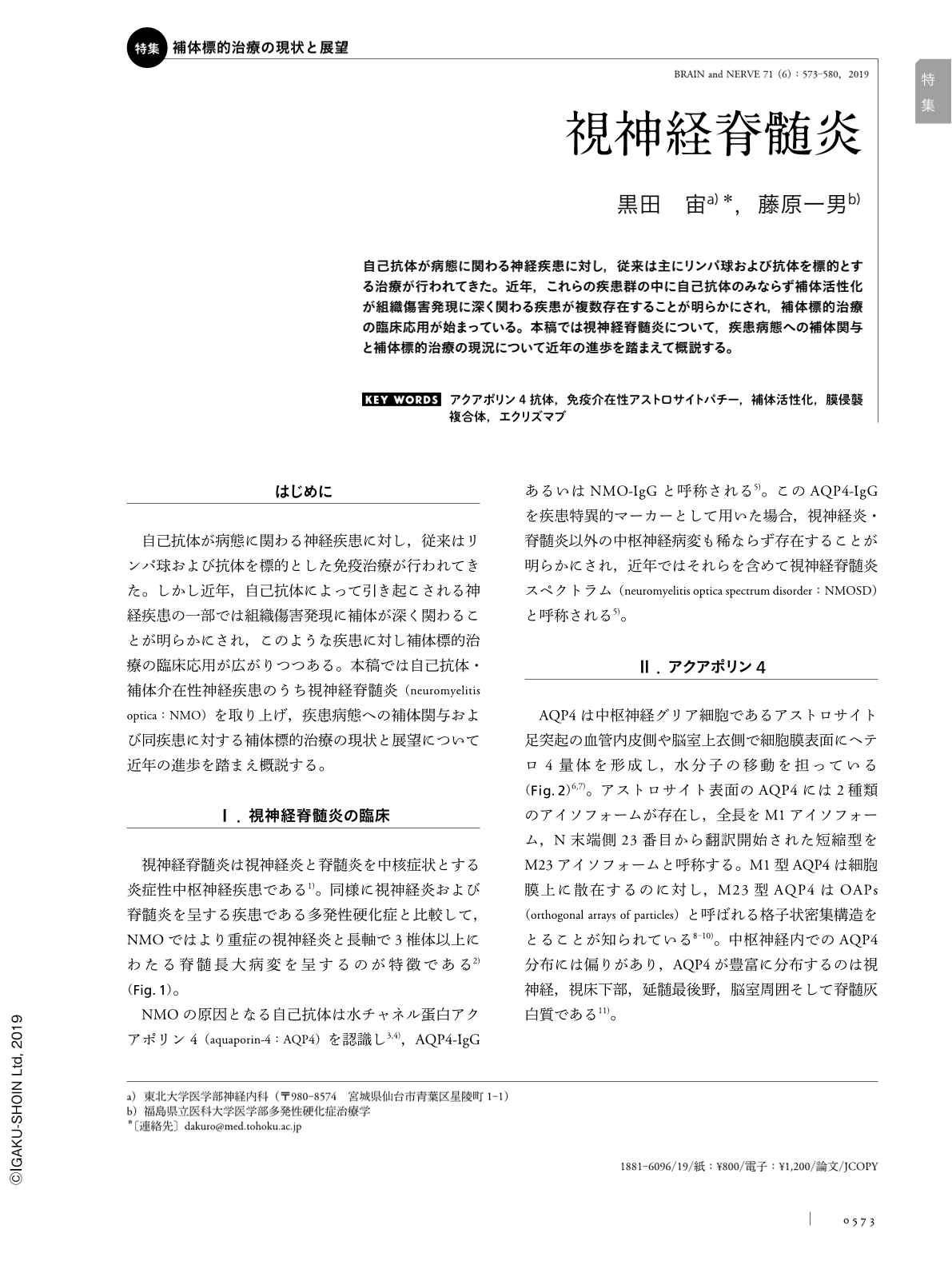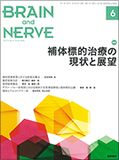Japanese
English
- 有料閲覧
- Abstract 文献概要
- 1ページ目 Look Inside
- 参考文献 Reference
自己抗体が病態に関わる神経疾患に対し,従来は主にリンパ球および抗体を標的とする治療が行われてきた。近年,これらの疾患群の中に自己抗体のみならず補体活性化が組織傷害発現に深く関わる疾患が複数存在することが明らかにされ,補体標的治療の臨床応用が始まっている。本稿では視神経脊髄炎について,疾患病態への補体関与と補体標的治療の現況について近年の進歩を踏まえて概説する。
Abstract
Neuromyelitis optica (NMO) is clinically characterized by severe optic neuritis and long myelitis; and is associated with aquaporin-4 immunoglobulin-G (AQP4-IgG), an autoantibody directed against aquaporin-4 (AQP4), which is an astrocytic water channel protein. Until recent years, the treatment of NMO has mainly focused on the suppression of lymphocytes and depletion of autoantibodies. However, several studies on the pathogehesis of the disease in human pathology, cultured cells, and animal models have revealed that astrocyte injury in NMO is mainly caused by the complement-dependent cytotoxicity following AQP4-IgG binding to AQP4. Moreover, complement-targeting therapy has recently been translated into practical applications in several hematological disorders. and similary, also in the cases of NMO. In this article, we review the relevance of the complement system in the pathogenesis of NMO. Additionally, we review the current status and prospects of the complement-targeting therapy for NMO, including the clinical trials of eculizumab and C1 inhibitor for NMO, and the experimental studies on C1 inhibition by monoclonal antibodies.

Copyright © 2019, Igaku-Shoin Ltd. All rights reserved.


